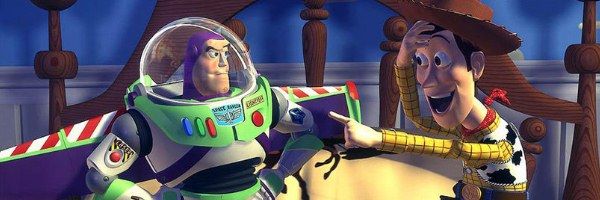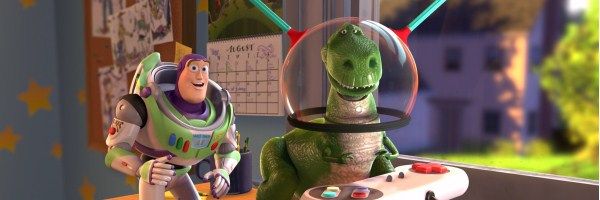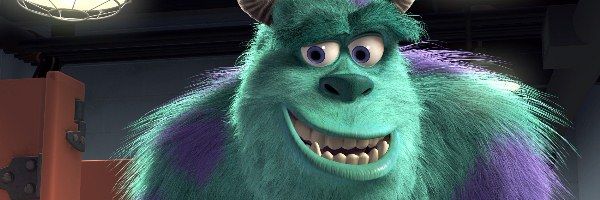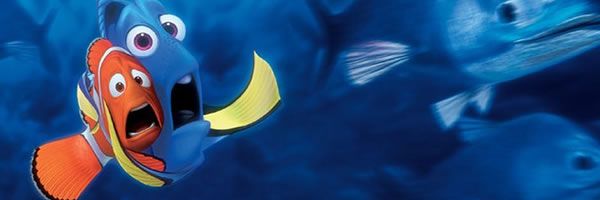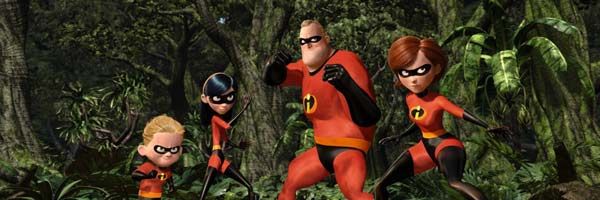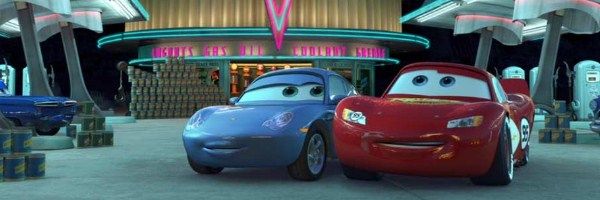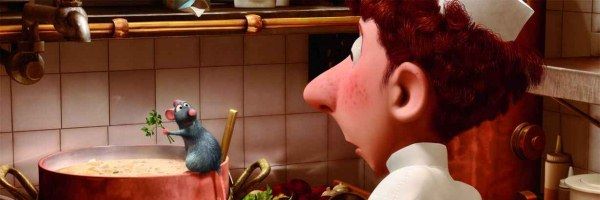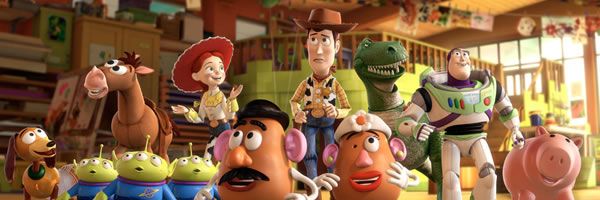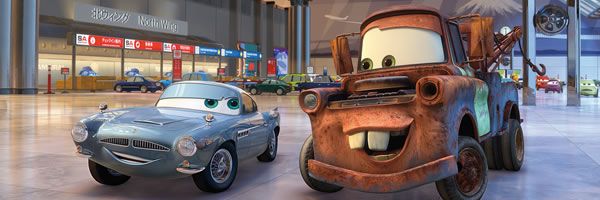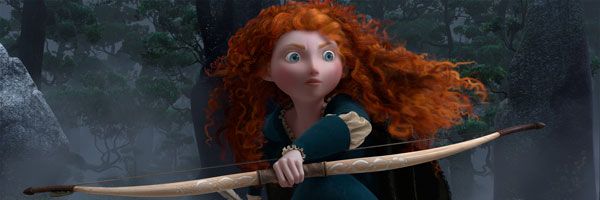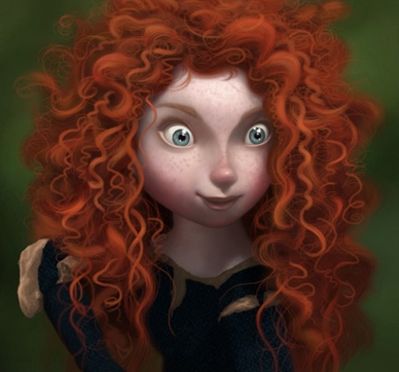This weekend, Brave became Pixar's 13th feature film, the latest addition to an impeccable body of work that started nearly twenty years ago with Toy Story. Given the storied history of everyone's favorite animation studio, I think this is the perfect opportunity to try out a new feature, By the Numbers. Essentially, I will go one by one through each of the Pixar movies and provide a numbers-based snapshot of its place in the filmography by looking at the box office, critical reception, and miscellaneous facts. Four thousand words later, I hope you'll agree this is a comprehensive review of Pixar's work over the last two decades.
Hit the jump for a detailed look at Toy Story, A Bug's Life, Toy Story 2, Monster's, Inc., Finding Nemo, The Incredibles, Cars, Ratatouille, WALL-E, Up, Toy Story 3, Cars 2, and Brave.
Toy Story
Year: 1995
RT: 100%
Worldwide Gross: $362 million
The numbers:
- 1991 – Year that Disney and Pixar signed a three-picture deal, the first of which was Toy Story. The deal awarded 10% of Toy Story’s profits to Pixar.
- 77 – Runtime in minutes, making this the shortest Pixar movie by more than 10 minutes.
- 11/19/1993 – The day the movie nearly fell apart. The Pixar team presented an early draft that Disney hated, partly because Woody came across as a “sarcastic jerk.†Production was nearly shut down, but Pixar instead promised an entirely revamped story in two weeks that looked a lot closer to the final version.
- $30 million – Listed production budget. Toy Story is by far the cheapest movie Pixar ever made, paling in comparison to the $200+ million budgets of the recent movies.
- 110 – Staff members who worked on the film, including 27 animators. That number also grew considerably over the years.
- 114,240 – Frames of animation in the final film, requiring 800,000 machine hours to render at 2‑15 hours per frame.
- $75 million – Break-even point specified by Pixar co-founder Steve Jobs: “If it gets $100 million, [Pixar and Disney will] both make money. But if it's a real blockbuster and earns $200 million or so at the box office, we'll make good money, and Disney will make a lot of money."
- ∞ - Where Buzz Lightyear will go to. (And beyond.)
Ah, the one that started it all. I wish I could give you the exact number of times I watched this on videocassette as a kid. I would need three digits. Given that this was the first feature film to be entirely produced with computer animation, it looks a little rough around the edges compared to the new stuff. But boy, is the story timeless.
A Bug’s Life
Year: 1998
RT: 92%
Worldwide Gross: $363 million
The numbers:
- 1988 – Year that Disney conceived of Army Ants, a movie about “a pacifist worker ant that teaches important lessons to his militaristic colony through his independent thinking.†The idea never made it out of development.
- 7 – Samurai in Akira Kurosawa’s Seven Samurai, which serves as the basis for the story of A Bug’s Life.
- 8 – Number of general designs of individual ants used for crowd scenes. The animators only needed to draw 4-5 groups of these 8 universal ants and replicate to represent 800 ants of an ant colony in the frame.
- 2.40:1 – Aspect ratio of A Bug’s Life, the first computer animated movie to use this anamorphic ratio.
- 54 – Days between the release of Antz (October 2) and A Bug’s Life (November 25). Dreamworks moved its bug movie Antz from March 1999 to October 1998 to beat A Bug’s Life to theaters.
- $185 million – Difference in worldwide gross between Antz ($172 million) and A Bug’s Life ($363 million) despite the date shift.
A Bug’s Life often gets lost in the shuffle when rattling off a list of the great Pixar films. But it proved that Toy Story was not a fluke, that this Pixar company was on to something with their computer animation. Plus, it introduced the idea of a fake animated blooper reel, which at the time, was the most ingeniously funny idea 10-year-old me had ever encountered.
Toy Story 2
Year: 1999
RT: 100%
Worldwide Gross: $485 million
The numbers:
- 03/12/1997 – Date when Disney and Pixar officially announced they would make a sequel to Toy Story with Ash Brannon in charge as director.
- 9 – Months taken to complete the entire movie. Toy Story 2 was originally supposed to be a direct-to-video sequel, but Disney liked the early footage and renegotiated for a theatrical release that ended up creating a time crunch. Pixar was internally unhappy with the product, so Lasseter took over the production as director and rushed it through production. Brannon and Lee Unkrich were credited as co-directors on the final product.
- 2 – Days taken for the “story summit†at John Lasseter’s house. Lasseter invited Andrew Stanton, Pete Docter, Joe Ranft and others over one weekend to hammer out the finished story that they pitched to the studio on Monday.
- 2 million – Dust particles animated for the scene where Woody meets Wheezy on the dusty top shelf.
- 3:02 – Length of “When She Loved Me,†the song that plays uninterrupted over Jessie’s flashback. Composer Randy Newman was concerned that young children would grow restless during a 3-minute ballad.
- 12 – Years Pixar took to sequelize any of their other properties until Cars 2 in 2011. The Monsters, Inc. sequel Monsters University is due in 2013.
There is an argument to be made that Toy Story 2 is the best sequel of all time. I can’t find another case where both the first movie and its sequel earned a perfect 100% on Rotten Tomatoes. [Edit: Of course a reader found one. Frankenstein and Bride of Frankenstein.] But back in the days before the Best Animated Feature category was created, Toy Story 2 landed just one Oscar nomination, for Best Original Song. The “When She Loved Me†scene is a contender for the most beautiful sequence Pixar ever created, but the song lost to fellow Disney nominee “You’ll Be in My Heart†from Tarzan.
Monsters, Inc.
Year: 2001
RT: 95%
Worldwide Gross: $525 million
The numbers:
- 30 – Age of the man who had to deal with monsters in writer/director Pete Docter’s original idea for the movie. The idea was the monsters this man drew as a boy came back to haunt him as an adult.
- 3 – Age of Boo in the movie. They considered having an older child at the center of the plot, between the ages of 6-12. In the end, Docter decided Boo should be 3 because, “The younger she was, she became the more dependent on Sulley.â€
- 1998 – Year when the character Mike Wazowski was added to the movie. Docter and his team started working on the script in 1996. It wasn’t until development artist Ricky Nierva sketched the character in April 1998 that Mike was created, and soon became the co-lead in the story.
- 0 – Arms Mike had in the original character design. The plan was for Mike to use his legs as appendages, but that caused difficulties in animation, so they gave him arms.
- 6 – Legs on the octopus behind the bar in the scene at the restaurant. The restaurant was named Harryhausen in tribute to Ray Harryhausen, a legend for his stop-motion monster creations in such movies as Jason and the Argonauts and Clash of the Titans. The octopus he designed for It Came from Beneath the Sea also only had 6 legs due to budget restrictions.
- 2,320,413 – Individually animated hairs on Sulley. It took 11-12 hours to render a single frame with Sulley in it.
- 2319 – The code number called out in the scene where a monster leaves the human world with a white sock stuck to his back. The 23rd and 19th letters of the alphabet are W and S, respectively, perhaps standing for “white sock.â€
- 4 – Movies that feature both John Goodman and Steve Buscemi. Monsters, Inc. was the fourth teaming of Goodman/Buscemi and the first that wasn’t a Coen brothers movie.
If you discount my nostalgia for Toy Story, Monsters, Inc. is my favorite Pixar movie. It has so much heart, and the chase through the doors is such a thrilling climactic sequence. And the look on Sulley’s in the very last shot of the movie… gets me every time. I am nervous about Monsters University, the upcoming prequel set ten years before the events of Monsters, Inc., because Docter isn’t returning to direct and there’s no Boo. But I am also very excited to revisit the remaining characters and this ingenious world.
Finding Nemo
Year: 2003
RT: 98%
Worldwide Gross: $868 million
The numbers:
- 1992 – Year when director writer/director Andrew Stanton took his son to Marine World. Stanton imagined that the underwater world would look beautiful in computer animation.
- 1997 – Year when pre-production began. Stanton took his son for a walk in the park earlier that year, but found he ruined the opportunity to bond with his son by worrying too much about protecting the boy. He incorporated that theme into the story.
- 150 – Age of Crush, the sea turtle that helps Marlin and Dory in their search for Nemo. Stanton did the voice of Crush for the story reel with plans to cast a voice actor later. The character was popular in test screenings, so Stanton kept his voice for Crush in the final film.
- 3 – Types of shapes used for the coral reef: “Tall vertical things, big flat horizontal things, and round masses.†The artists went scuba diving to study the look of the ocean and derived that simple formula for designing the coral reef.
- 40 million – Copies of the DVD sold as of 2006. As far as I can tell, Finding Nemo is still the bestselling DVD of all time. It broke the first-day record for home-release sales with 8 million copies.
I would say this is when Pixar became PIXAR, the company we speak of in hushed, reverent tones. The prior movies did very well with critics and audiences, but $868 million is rarified air. It shot up into the top 10 of both the domestic and worldwide box office charts. And it’s amazing. I never saw it in theaters, so I am very excited for the re-release in September.
The Incredibles
Year: 2004
RT: 97%
Worldwide Gross: $631 million
The numbers:
- 1993 – Year when writer/director Brad Bird first drew the superhero family that became The Incredibles. Bird initially set up The Incredibles as a traditionally animated movie at Warner Bros. A tribute to the original hand-drawn design of the characters is in the end credits.
- 2003 – Year when Warner Bros. shut down the animated feature division due to the financial disaster of Looney Tunes Back in Action. Lasseter, who was friends with Bird at CalArts, used this opportunity to finally convince Bird to come to Pixar and make The Incredibles computer animated.
- 89 – Sets built for the production. A physical set would be built so that, with a camera, the team could see what each location should look like from different angles. For comparison, Monsters, Inc. had 31 sets.
- 4 – Days it took for Jason Lee to record his vocals as Syndrome. Craig T. Nelson recorded his vocals as Mr. Incredible over the span of two years.
- 1/10 – Fraction of a second to display images with LPICS. Pixar designed LPICS so lighting designers could make lighting changes and see the new image instantly. Previously, the process required 2000 seconds.
- 17.38 million – Copies of the DVD sold. The Incredibles was the highest-selling DVD of 2005.
- 866-787-7476 – The toll-free on Mirage’s calling card. On a phone pad, one can spell out “suprhro†with the digits. The official web site initially required the user to input the phone number to access a deleted scene not included on the DVD. The requirement has since been removed and the phone line no longer works.
The Incredibles was the first PG movie in the filmography, and Pixar took the opportunity to target an older audience. The central theme, as voiced by the villain of the movie, is essentially “When everyone's super, no one will be.†Take A.O. Scott’s response to that declaration:
“The intensity with which The Incredibles advances its central idea---it suggests a thorough, feverish immersion in both the history of American comic books and the philosophy of Ayn Rand---is startling. At last, a computer-animated family picture worth arguing with, and about!â€
The Incredibles cemented Pixar’s reputation as masters in the greater world of cinema rather than just kids’ movies.
---
Head to page 2 for the numbers on Cars, Ratatouille, WALL-E, Up, Toy Story 3, Cars 2 , and Brave.
Page 2
Cars
Year: 2006
RT: 74%
Worldwide Gross: $462 million
The numbers:
- 66 – Famous route that inspired the movie. The original working title was Route 66, but was changed to Cars to avoid any confusion with the 1960s television show.
- 95 – Lightning McQueen’s racing number, a reference to Toy Story’s release in 1995. At one point in development, McQueen’s number was 57, a tribute to John Lasseter’s birth year.
- 117 – Runtime in minutes. Cars is the longest Pixar movie.
- $8 billion – Estimated merchandise sales as of February 2011. The Cars movies are on the lower end of Pixar’s filmography in terms of box office, but the franchise now brings in about $2 billion in global retail sales per year.
- 7 – Number of Pixar movies Joe Ranft worked on. He came to Pixar in 1991 as the head of the story department, and voiced a character in each feature, including Wheezy the penguin in Toy Story 2. Cars was his last film before he died in a car crash in 2005.
The first misstep, and even that is debatable. Cars is a solid movie---good, maybe even great. But Cars is more flawed than its immediate predecessors. I think of Cars as this massive commercial property, so I was surprised to see it “only†grossed $462 million worldwide, the lowest since A Bug’s Life. But I guess $8 billion more than makes up for it.
Ratatouille
Year: 2007
RT: 96%
Worldwide Gross: $624 million
The numbers:
- 2001 – Year when Jan Pinkava came up with the concept for Ratatouille. Pinkava was set to direct the movie and developed the story and design for several years.
- 2005 – Year when Brad Bird replaced Pinkava as director. The movie was not progressing to a place where Pixar or Pinkava were confident. Brad Bird stepped in to take over the production and largely rewrote the story.
- 4500 – Reference photographs taken in Paris. The crew took a motorcycle tour and ate at five of the city’s top restaurants to understand the setting.
- 0 – Toes on the humans. This was done to save time in the animation process.
- 1,150,070 – Hairs rendered on the rat, Remy. For comparison, Colette, the female lead in the Ratatouille, was rendered with 176,030 hairs.
- 270 – Food items created and stored in the computer. Each dish was prepared in real life, photographed for reference, then eaten. The artists also photographed 15 different kinds of produce as they rotted to create a realistic compost pile.
- 68 – Height difference in inches between Remy (7 inches) and the central human character Linguini (6’3â€). Skinner, the head chef at the restaurant, split the difference at 3’6â€.
Ratatouille showed some signs of weakness with a $47 million opening weekend, the lowest since A Bug’s Life. But the release showed terrific legs. The weekend-to-weekend dropoff stayed below 40% for the first five weeks in release until Ratatouille surpassed $200 million domestically and made double that internationally. Not bad for a movie about a rat.
WALL-E
Year: 2008
RT: 96%
Worldwide Gross: $521 million
The numbers:
- 125,000 – Storyboards created for the production. Story artist Derek Thompson remarked: “Typically a Pixar film will have between 50 and 75,000 storyboards generated for the entire production. WALL-E was north of 125,000 drawings. That's a phenomenal amount of drawings for a team of about six most of the time.â€
- 2 – Weeks cinematographer Roger Deakins spent at Pixar. The 9-time Oscar-nominee hosted a talk at Pixar to advise on lighting and atmosphere and was promptly invited to stay on for another two weeks. 8-time Oscar-winning special effects artist Dennis Muren spent several months at Pixar consulting the team how to integrate computer animation into realistic settings.
- 700 – Years that WALL-E has been “alive.†Earth was evacuated in 2105, leaving WALL-E and identical robots to clean the planet. Only our WALL-E survived to 2805 by harvesting replacement parts from his broken robot brothers.
- 3 – Actors from the silent era who inspired the animators. Director Andrew Stanton said the story crew and animation crew “watched a [Charlie] Chaplin film and a [Buster] Keaton film and sometimes a Harold Lloyd film every day at lunch for almost a year and a half.†Also, the hopeless romanticism of WALL-E was inspired by Woody Allen.
- 2,500 – Sounds that sound designer Ben Burtt recorded for the film. The veteran Burtt estimated that this doubled the number of sounds he recorded during any of the Star Wars movies he worked on. Burtt used generators, tanks, and household appliances to create the sounds, but voiced WALL-E himself by running his voice through a computer.
- 6 – Oscar nominations, the most for a Pixar movie. In only won Best Animated Feature, the 4th of 6 Pixar movies to win the award.
The first half of Wall-E is my favorite thing Pixar has done. It sets the bar so high for what can be done in animation, that it’s unfairly disappointing when the movie settles into just “very good†for the second half. Now that Pixar is making Toy Story shorts, I hope we get to see more of WALL-E’s time on Earth in the near future.
Up
Year: 2009
RT: 98%
Worldwide Gross: $731 million
The numbers:
- 3 – Nights the artists spent at Monte Roraima in Venezuela. They spent the day painting and sketching what they saw to inspire the South American setting, particularly the tepui and Angel Falls.
- 20,622 – Balloons tied to the house when it takes off. An internal technical director estimated that it would actually require 20-30 million balloons to lift the house.
- 4:21 – Length of the dialogue-free scene that depicts the entire marriage of Carl and Ellie Frederickson.
- 100% - Percentage of people who cry when they watch that scene.
- 500 – Children who auditioned to voice the young supporting character Russell. Writer/director Pete Docter remarked, “As soon as Jordan [Nagai’s] voice came on we started smiling, because he is appealing and innocent and cute and different from what I was initially thinking.â€
- 2 – Letters in the title. Up is the only Best Picture nominee with just two letters, though Z holds the record for fewest letters in a nominated title.
- 3 – Dimensions. Up is the first Pixar movie to be shown in 3D. All subsequent movies through 2013’s Monsters University were made in 3D. Toy Story and Toy Story 2 were converted to 3D for theatrical re-release just before Toy Story 3; Finding Nemo and Monsters, Inc. were also converted to 3D for re-release over the next year.
Up shows Pixar at their most invincible. Wall-EÂ was a tough sell because there is so little dialogue, but the lead character was an adorable robot. Up, however, centers on a crochety old man. How can kids relate to that? And yet, $731 million. Plus, it was the first Pixar movie and the first animated movie since Beauty and the Beast to be nominated for best picture.
Toy Story 3
Year: 2010
RT: 99%
Worldwide Gross: $1.1 billion
The numbers:
- 11 – Years that passed between Toy Story 2 and Toy Story 3. They even got John Morris back to reprise his role as a college-bound Andy despite the fact Morris had done no voice acting since 2001.
- 3 – Movies Lee Unkrich co-directed (Toy Story 2, Monsters, Inc., Finding Nemo) before he was credited as the sole director on Toy Story 3.
- 0 – Models from the first two movies that the team could re-use. Unkrich explained, “When we went back to take a look at our original work, we literally couldn't open the files.†That meant the crew had to recreate the models from scratch.
- 21 – Different outfits that the Ken doll wears in the movie.
- 95 – Number on the side of the train seen at the beginning of the movie, a reference to the year Toy Story was released.
- 6 – Movies scored by Randy Newman. Toy Story 3 was the sixth Pixar movie Newman scored following Toy Story, A Bug’s Life, Toy Story 2, Monsters, Inc., and Cars.
- 99.67% - Average Rotten Tomatoes score of the trilogy. Only 3 of the 476 reviews are negative, resulting in a 99.37% approval rating.
- 8 – Rank of Toy Story 3 on the all-time worldwide box office chart. Only 12 movies have ever grossed more than $1 billion theatrically.
This seemed like tempting fates. Lightning struck twice delivering two flawless Toy Story movies, and in the decade since Toy Story 2, Pixar specialized in stellar original output. Why return to the Toy Story well? The doubters were silenced when the movie came out. Not only did it make over $1 billion---it was one of the best movies of the year, a worthy sequel and fitting conclusion to the trilogy. And now the franchise will seemingly live on in shorts and TV specials.
Cars 2
Year: 2011
RT: 38%
Worldwide Gross: $560 million
The numbers:
- 5 – Years that passed between Cars and Cars 2.
- 3 – Members of the Cars voice cast who died before production on Cars 2. Paul Newman’s character Doc Hudson was written out of the sequel. Lloyd Sherr stepped in to voice Fillmore, previously played by George Carlin. And Joe Ranft’s character Red was seen in the film, but had no dialogue.
- 5 – Races in the original script. Races were planned for Paris, Germany, Tokyo, London, and Porto Corsa. The Germany race was cut and the Paris race was reworked due to time constraints.
- 4 – Movies scored by Michael Giacchino. Cars 2 was the fourth Pixar movie Giacchino scored following The Incredibles, Ratatouille, and Up.
- 0 – Oscar nominations. Cars 2 was the first Pixar movie to receive no Oscar nominations.
- $9 million – Amount Cars 2 needed to reach $200 million domestically. The last movie to gross less than $200 million domestic was A Bug’s Life in 1998. Accounting for inflation, Cars 2 is Pixar’s least successful film in the U.S.
This is the Pixar film I haven’t seen. I probably will eventually because I am a completist. But I am not looking forward to the Mater-heavy adventure. 11 good-to-perfect films in a row was an amazing achievement and totally unsustainable, so they were bound to stumble into a dud at some point.
Brave
Year: 2012
RT: 74%
Gross: TBD
The numbers:
- 3 - Credited directors. Brenda Chapman was the original director when the working title was The Bear and the Bow, but Mark Andrews was brought in to replace her in 2010. Steve Purcell is credited as co-director.
- 80% - Approximate percentage of scenes that took place in the snow in the initial drafts. Chapman’s departure metaphorically melted the snow, and there is very little snow left in the final product.
- 2 - Actors linked to the role of Merida. Reese Witherspoon was originally supposed to voice Pixar’s first female lead protagonist, but backed out due to scheduling issues. The authentically Scottish Kelly Macdonald took over the role.
- 4 - Actors were also in the Harry Potter series: Kelly Macdonald, Emma Thompson, Robbie Coltrane, and Julie Walters.
- 10 - Century when the story takes place, the first time Pixar has made a period piece.
- 93 - Runtime in minutes, making it the shortest Pixar movie in over a decade, since Monster's, Inc.
- 6 - Bare butts seen in the movie. Brave is rated PG for “some scary action and rude humor.†This is the third PG Pixar film after The Incredibles and Up. The rest are rated G.
- 13 - Times John Ratzenberger has now voiced a character in a Pixar movie. He voices a guard in Brave.
- $210 million – Listed production budget, making this the most expensive Pixar movie yet. Toy Story 3 and Cars 2 are both listed at $200 million.
I was completely hooked at the beginning of Brave, which sets up an inviting mythology that seems more than enough to sustain the brisk runtime. The depiction of the Scottish highlands is predictably gorgeous, and the character designs are lovely. Merida’s untameable bright red hair is a thing of beauty, a character unto its own. This was widely hyped as Pixar’s first movie that centers on a female protagonist, and Merida does not disappoint. As voiced by Kelly Macdonald, she is feisty and clever, and I wish I had a daughter who could look up to her.
The conflict between mother and daughter is delineated perhaps a bit too bluntly, but terrific performances by Macdonald and Emma Thompson as her mother Elinor give life to the mother/daughter relationship, even as they render the repetitive establishment of their dynamic unnecessary. A narrative twist raises the stakes, but inadvertently redirects the momentum of the storytelling so drastically that Andrews is unable to keep everything under control. The rest of the runtime is entertaining, occasionally thrilling, and often very funny (the mischievous triplets are a highlight). But the finished product fails to live up to the potential so intricately teased in the first act.
Like WALL-E, Brave immediately takes off and sets up infinite possibilities, only to settle into a more traditional plot and tone that aren’t unique to Pixar. Unfortunately, Brave never reaches the heights of WALL-E and stumbles more clumsily into the weaker second half of the movie. The result is still a good movie with flashes of greatness. However, I wished for a triumphant return to form rebounding from Cars 2---another Pixar classic. As unfair a standard as that may be, Brave will not add to the Pixar reputation so much as keep it intact.
---
Unless otherwise linked, all information comes from Wikipedia or IMDB


